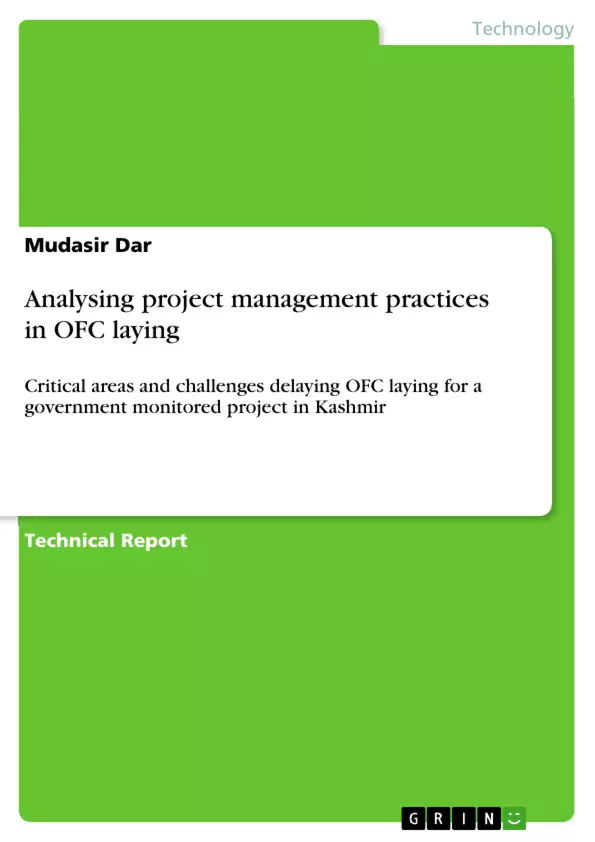In OFC laying, execution approaches for risk management using a set of practices are normally insufficient, which limits the success of on-time project delivery. This paper describes the approach for managing the execution and provides a set of practices for completing an OFC laying project on time within budget.
In developing countries like India, project management for developing OFC infrastructure is still not mature and there is a lack of coordination between various OFC deployment agencies. This paper provides insight for proper planning of OFC deployment and analysing the case study of project delay in a critical OFC deployment project.
The study concluded that there is a good opportunity for implementing best project management and improving execution practices, for deploying OFC in the toughest terrain of India, where all kind of challenges are encountered.
Inhaltsverzeichnis (Table of Contents)
- Abstract
- Introduction
- Discussion
- a. Planning
- a.1 Pre-bid planning
- a.2 Resource planning
Zielsetzung und Themenschwerpunkte (Objectives and Key Themes)
This paper examines the challenges and critical areas in managing the execution of an OFC laying project in the challenging terrain of Kashmir, specifically focusing on delays and how to achieve on-time project delivery within budget. It provides insights into proper planning and risk management strategies for OFC deployment in developing countries like India.
- Challenges and critical areas in OFC laying project management
- Best practices for improving execution practices in OFC deployment
- Risk management strategies for overcoming project delays
- Planning and resource management in challenging terrains
- Case study analysis of project delays in a critical OFC deployment project
Zusammenfassung der Kapitel (Chapter Summaries)
- Abstract: This section provides an overview of the paper's focus on managing OFC laying projects and the challenges associated with on-time delivery. It highlights the importance of effective risk management and execution practices for successful project completion.
- Introduction: This section introduces the evolution of project management, emphasizing the need for flexible approaches in dynamic and complex project environments. It discusses the specific challenges of OFC laying projects, particularly in government-funded projects, and outlines the key steps involved in OFC deployment.
- Discussion: This section delves into the critical areas that require attention for successful OFC laying project execution in challenging regions. It identifies ten focus areas, including planning, resource management, contract management, and risk management. The section then provides detailed analysis of pre-bid planning and resource planning, exploring challenges and proposing solutions.
Schlüsselwörter (Keywords)
This study focuses on OFC laying project management, risk management, execution practices, project delays, challenging terrains, resource planning, pre-bid planning, and government-funded projects. It examines the case study of OFC deployment in the challenging terrain of Kashmir, highlighting the need for best practices and effective strategies to overcome project delays and achieve on-time delivery within budget.
- Arbeit zitieren
- Mudasir Dar (Autor:in), 2013, Analysing project management practices in OFC laying, München, GRIN Verlag, https://www.grin.com/document/339024



